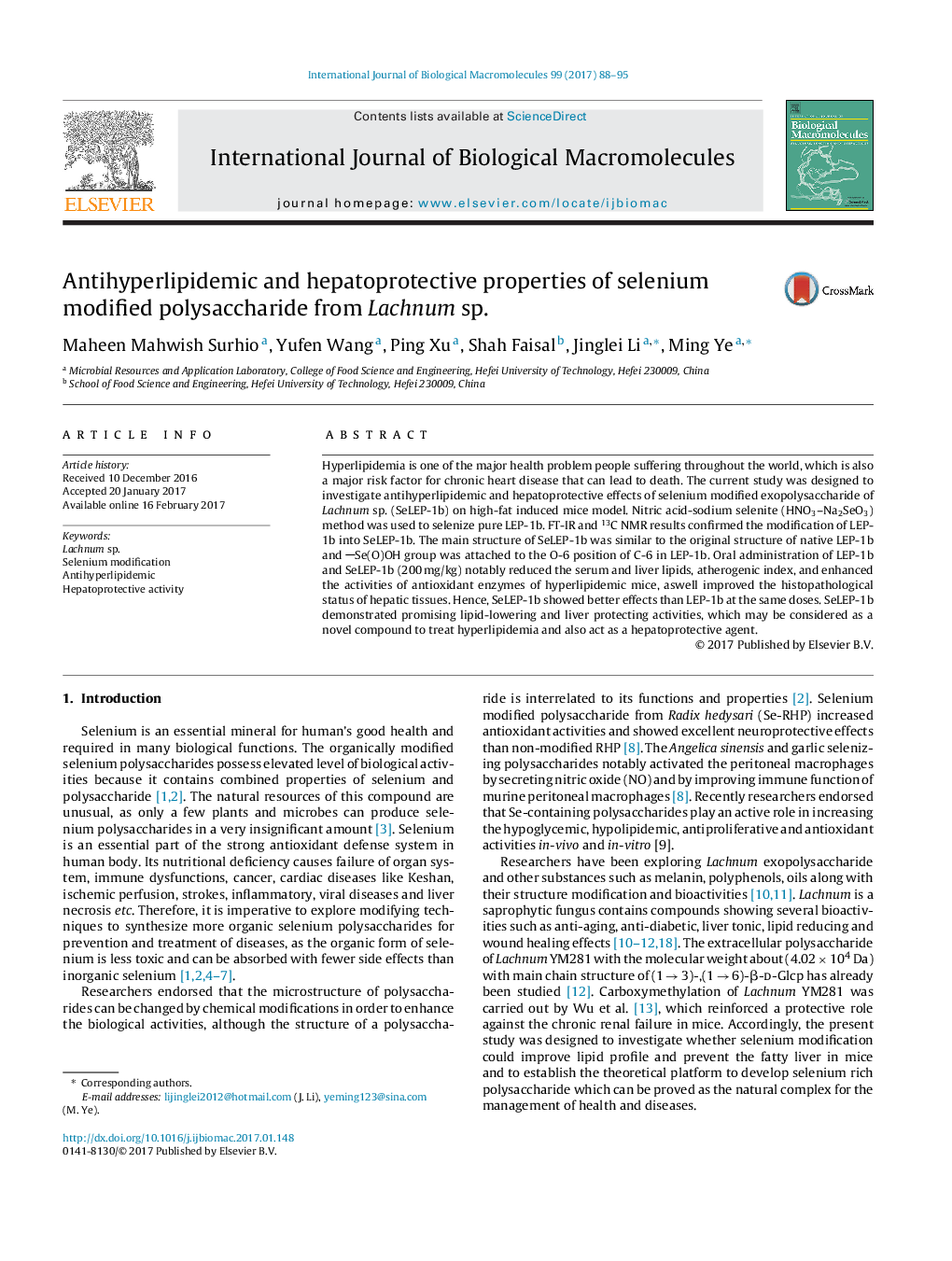| Article ID | Journal | Published Year | Pages | File Type |
|---|---|---|---|---|
| 5512037 | International Journal of Biological Macromolecules | 2017 | 8 Pages |
â¢A novel polysaccharide LEP-1b from Lachnum YM281 was modified with selenium to evaluate antihyperlipidemic and hepatoprotective effects.â¢LEP-1b and SeLEP-1b could improve lipid profile, reduce atherogenic index and also improve antioxidant mechanism of hyperlipidemic mice.â¢Hence SeLEP-1b possessed better effects than LEP-1b at the same doses.â¢SeLEP-1b showed protective effects than LEP-1b against fatty liver by recovering histopathalogical status of liver tissues of hyperlipidemic mice.
Hyperlipidemia is one of the major health problem people suffering throughout the world, which is also a major risk factor for chronic heart disease that can lead to death. The current study was designed to investigate antihyperlipidemic and hepatoprotective effects of selenium modified exopolysaccharide of Lachnum sp. (SeLEP-1b) on high-fat induced mice model. Nitric acid-sodium selenite (HNO3-Na2SeO3) method was used to selenize pure LEP-1b. FT-IR and 13C NMR results confirmed the modification of LEP-1b into SeLEP-1b. The main structure of SeLEP-1b was similar to the original structure of native LEP-1b and Se(O)OH group was attached to the O-6 position of C-6 in LEP-1b. Oral administration of LEP-1b and SeLEP-1b (200Â mg/kg) notably reduced the serum and liver lipids, atherogenic index, and enhanced the activities of antioxidant enzymes of hyperlipidemic mice, aswell improved the histopathological status of hepatic tissues. Hence, SeLEP-1b showed better effects than LEP-1b at the same doses. SeLEP-1b demonstrated promising lipid-lowering and liver protecting activities, which may be considered as a novel compound to treat hyperlipidemia and also act as a hepatoprotective agent.
